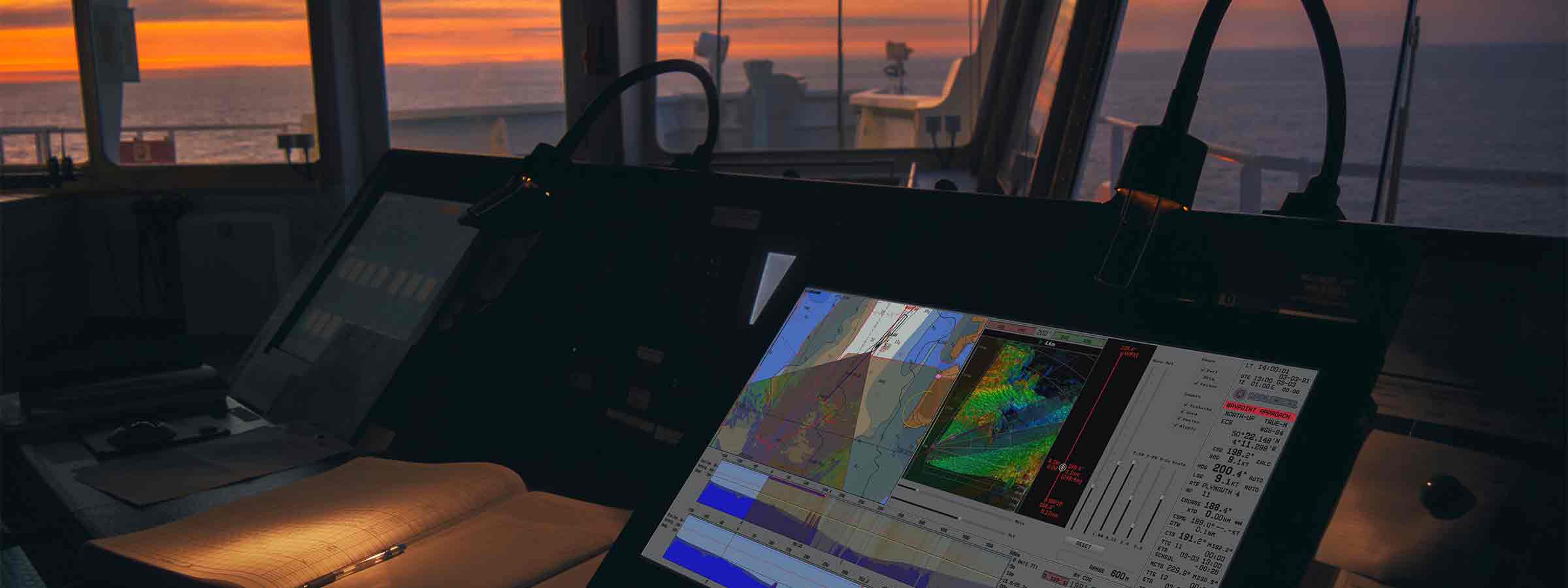Marine technology company Sonardyne has announced its Vigilant Forward-Looking Sonar (FLS) is now available as an external sensor interface for NAUDEQ’s electronic chart display and information system (EDCIS) MASTER-DEQ.
Sonardyne’s Vigilant FLS shows captains and crews where it is safe to navigate and alerts them to potential underwater dangers that could result in a collision or grounding. NAUDEQ’s naval, merchant and fishing vessel users can now take advantage of this valuable aid to navigation through Vigilant’s enhanced reality imaging overlaid on their MASTER-DEQ bridge display.
Using a compact, retrofittable bow-mounted transducer arrangement with no moving parts, Vigilant FLS gathers sonar data. From this, an accurate model showing easy to interpret 3D bathymetry of the seabed down to 100 m water depth and out to 600 m is built and displayed in real-time. 2D plots highlight submerged objects in the water out to 1,500 m ahead of the vessel over a 90-degree field of view. A history mapping capability provides greater situational awareness when tight manoeuvring or leaving a confined area.
Using the sonar data from Vigilant, NAUDEQ’s MASTER-DEQ builds and displays cut profiles and 3D maps of the seabed, taking into consideration the tide level. Through MASTER-DEQ, mariners can also view cut profiles looking at their course over ground, obstacle avoidance coinciding with heading and a profile in a user-defined direction.
By superimposing reliable Vigilant data on the seabed topography, built using NAUDEQ’s technology and using ENC S-57 data, a comparative analysis can be run. Any discrepancies between the chart data and the real-world returns from Vigilant are then clear to see. This can be invaluable when a vessel routes through poorly charted areas or where the chart information is not updated, or the seabed is likely to have changed because of tidal or harsh weather conditions.
[blockquote author=” Nikolai Chagoubatov, co-founder and CEO at NAUDEQ”]”A collaboration between the engineers in our two companies led to the discovery of new capabilities for reliable and early visualisation of the underwater terrain ahead of a vessel and in any chosen direction, within range of the sonar. This can significantly improve the safety of navigation, especially in narrow sea lanes or channels and when approaching the shore, both for large-tonnage and low-tonnage vessels.”[/blockquote]
“The quality and stability of the imagery produced by Vigilant is remarkable and unlike any other FLS we’ve encountered,” he adds. “Advance and accurate knowledge of underwater obstacles on the seabed along the path of the vessel is much more important than anticipated data. The high accuracy and range of measurements of the Vigilant data allows the watch officer to make an early decision on a safe avoidance of a detected underwater obstacle. This minimizes the risk and relieves unnecessary tension and stress in vessel management in non-standard situations.”
Derek Lynch, Global Business Manager, Vessel Systems at Sonardyne said, “The last 12 months has seen significant levels of groundings and collisions, strengthening the case for many types of vessel to consider Vigilant. Knowing what lies beneath the water in front of you, whether cruising in open water, approaching shallows or manoeuvring in a harbour, lowers risk to crew, the environment, cargo and vessel itself.
“The software team at NAUDEQ have built an impressive ECDIS platform, incorporating several unique features and modes conceived from their time serving as naval captains,” Lynch added. “With Vigilant now available as an option, it represents a very compelling solution for mariners.”
Vigilant is available as a standalone system with its own graphic user interface (GUI), into which chart displays can be integrated. It is also designed to be able to be overlaid into third party ECDIS systems, such as MASTER-DEQ, providing a powerful extra layer of domain awareness against otherwise unseen underwater obstacles.
